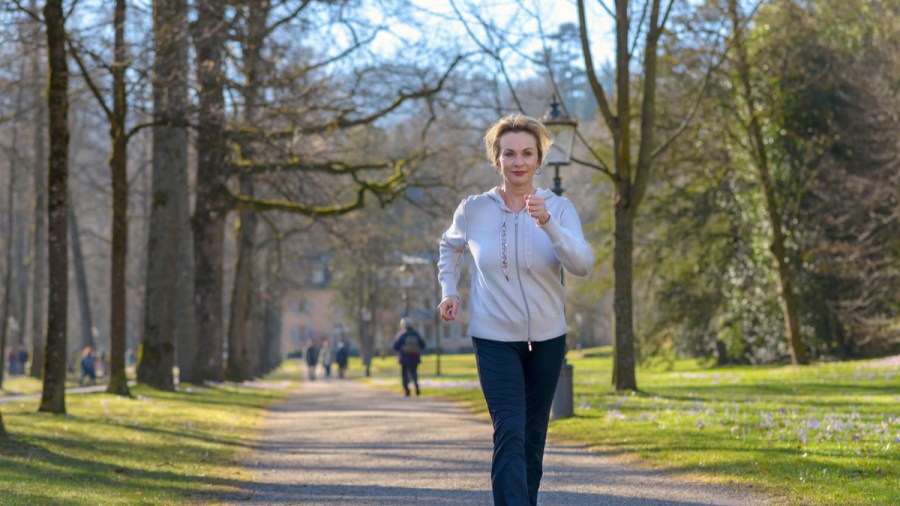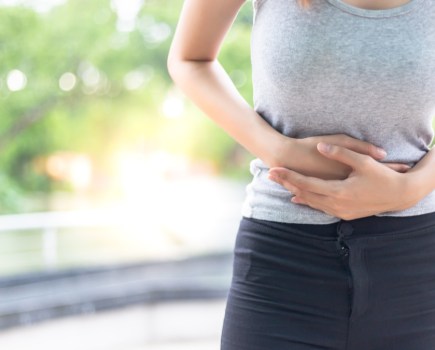Osteoporosis is a condition that leaves your bones weaker and as a result you can suffer fractures much more easily. It can happen as you age but in fact it can affect younger people too. Risk factors for osteoporosis include a family history of osteoporosis, but there are things you can do to help reduce the risk through being active and eating a healthy and varied diet.
Read on to find out more about the condition. However, this is no substitute for medical advice, so if you think you may have osteoporosis, it is important that you see your GP to get a diagnosis. If you do have osteoporosis, you can talk through the possible treatments and find the right solution for you.
What is osteoporosis?
Osteoporosis is a condition that causes your bones to become more fragile, making breaks more likely. All of us will find that the strength of our bones decreases as we get older to some extent. If you have osteoporosis, however, this bone loss accelerates so that you’re more likely to get a fracture if you fall or damage yourself.
Osteoporosis causes
There are a number of risk factors for osteoporosis. Some of the things that make it more likely are just part of you, and some are lifestyle factors. They include:
- Getting older
- Being a woman
- Being of Caucasian or Asian origin.
- Having menopause early or have a hysterectomy before the age of 45.
- Having a low body weight, which is associated with having less bone tissue. According to the NHS website a Body Mass Index (BMI) of 19 or less is a risk factor.
- Heavy drinking
- Smoking
- A family history of osteoporosis
There are numerous other conditions that are considered to be risk factors for osteoporosis, these include:
- Anorexia
- Bulimia
- Coeliac disease
- Crohn’s disease
- Cushing’s syndrome
- An over-active thyroid
- Rheumatoid arthritis.
Taking certain medications such as high-dose steroid tablets and some breast cancer and prostate cancer medicines that affect your hormones can have an affect.
The Royal Osteoporosis Society has an online questionnaire that you can take to find out if you are at risk of osteoporosis.
Osteoporosis symptoms
If you have osteoporosis you are much more likely to suffer fractures. That’s because if your bones are less robust, a fall or knock is more likely to result in a break. Common areas where this can happen are the wrists, hips, and vertebrae.
A broken bone can be the first indication for some people that they have got osteoporosis, though the Royal Osteoporosis Society does emphasise on its website that it is not inevitable that a person with osteoporosis will suffer fractures.
Some people may develop a stooped posture because of osteoporosis. Spinal fractures are common when bones become weaker and this can result in a curved spine or even a reduction in height.
Osteoporosis diagnosis
If you go to your GP with symptoms that may indicate that you have osteoporosis, or you have risk factors that you are concerned about, there are a number of tests that may be carried out.
They may ask for tests to check for other conditions. X-rays may be taken to check for fractures and a fracture risk assessment could be carried out to see how likely you are to get a break in the future.
A bone density scan may be done to assess your level of bone tissue. Sometimes this is referred to as a DEXA scan. It is a low-dose x-ray. It is not recommended for pregnant women, however. The bone scan will give you what they call a T score which gives an indication of how much bone loss there is compared to a young and healthy adult.
Osteoporosis treatments
Treating osteoporosis involves taking steps to improve the strength of the bones so that fractures are less likely to happen and also managing the effects of the condition.
Medication
There are a number of medicines that can be prescribed. Bisphosphonates are taken in tablet form or as an injection and they are used to reduce risks of breaks by slowing down the rate that the bones deteriorate. Selective Oestrogen Receptor Modulators (SERMs) may be used to reduce your risk of a break. Parathyroid hormone treatments are sometimes used to improve bone density. There are pros and cons to all medications so you need to talk through what is right for you with your GP.
Supplements
Calcium is a crucial component in maintaining healthy bones, and vitamin D helps your body absorb calcium. A varied diet should deliver enough calcium for a person with healthy bone density, but if you have osteoporosis you may need more. Because of this, calcium and vitamin D supplements may be recommended to you.
Pain relief
It is important to get help with managing pain if you suffer a fracture because of the condition, so speak to your GP about it if you are having problems. The answer could include pain relief medication, but there are other approaches too. Visit the Royal Osteoporosis Society website for information about how exercise and other strategies can help with pain.
How to prevent osteoporosis
Taking regular exercise is one of the most important things you can do to improve your bone density. All kinds of activity can have an impact but weight-bearing and resistance routines are especially important for people at risk of osteoporosis. Weight-bearing exercise means anything where you’re on your feet, so that includes skipping, dancing, fitness classes, running, and walking.
However, if you already have osteoporosis get some advice from your GP on what types of exercise are appropriate for you as you may need to adapt what you do.
Quitting smoking and avoiding too much alcohol are also important for your bone health.
Making sure you get enough calcium and vitamin D will also help your bone health. While people usually think of dairy first when they think of calcium, you can also get it from other sources including leafy green veg, sardines, and pulses. Vitamin D is produced as a result of exposure to sunlight and is contained in some foods including liver and oily fish such as mackerel. These nutrients can also come in supplement form.







